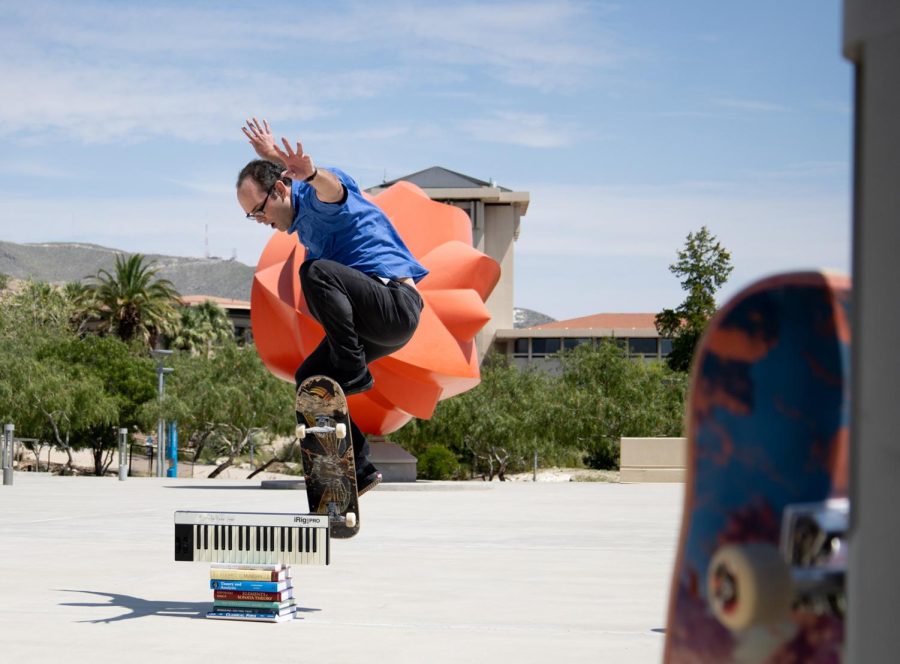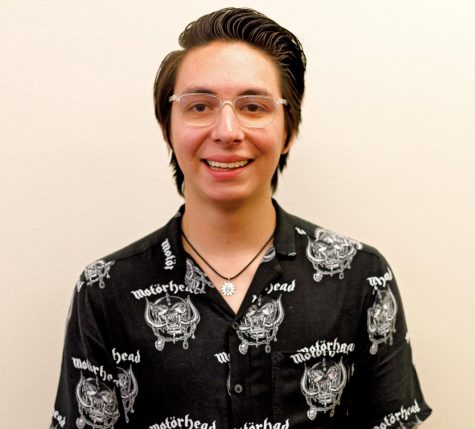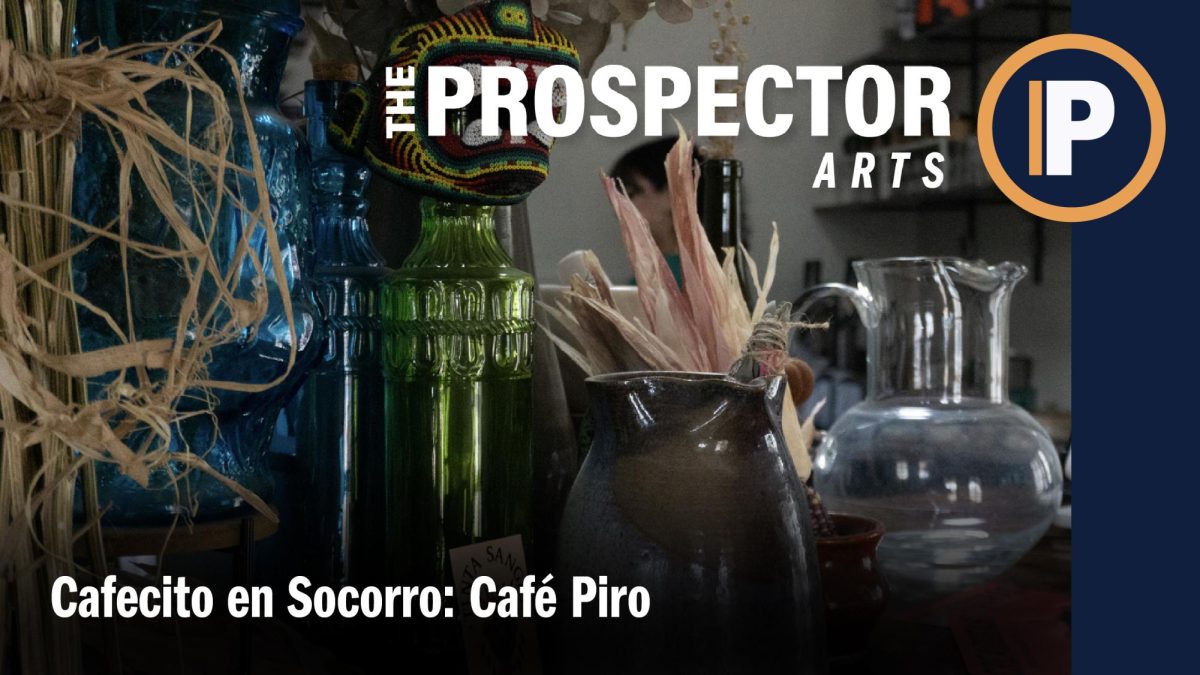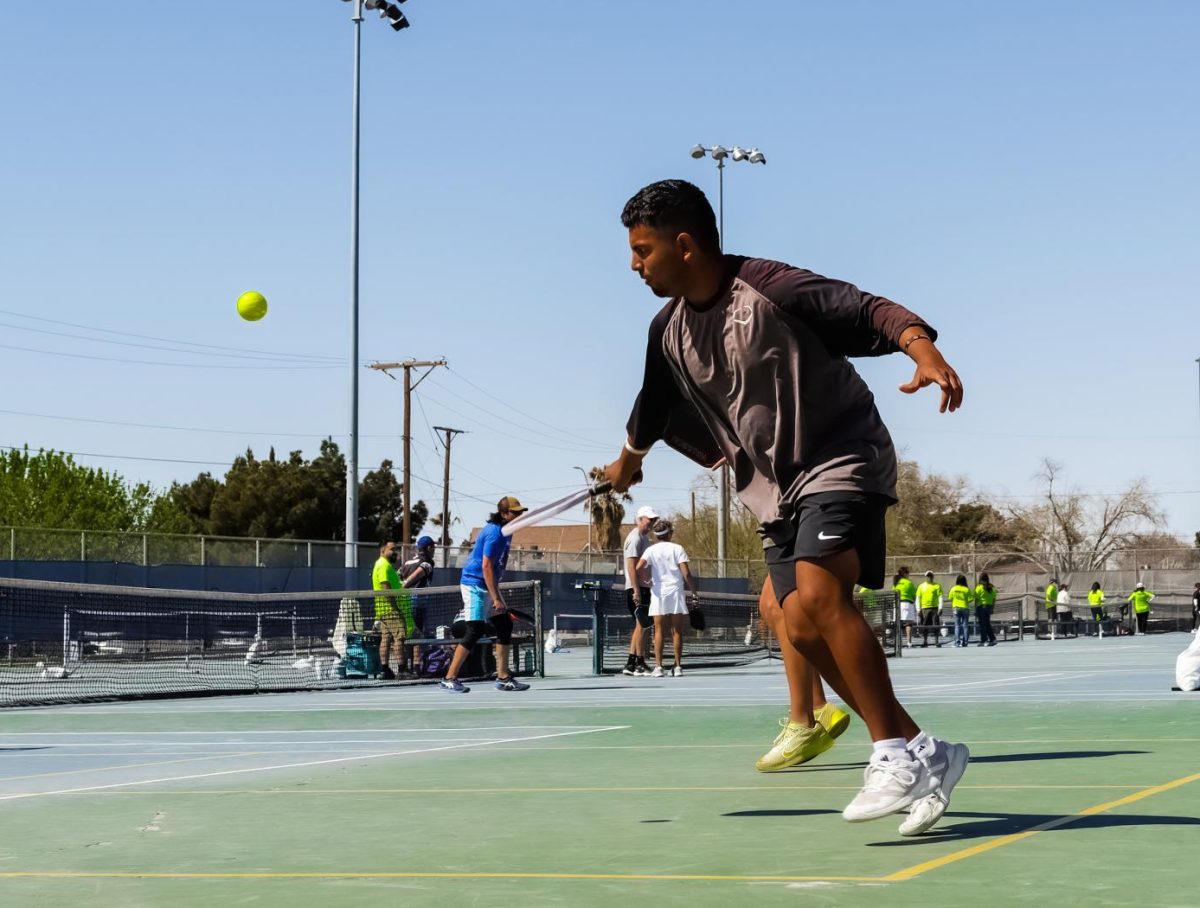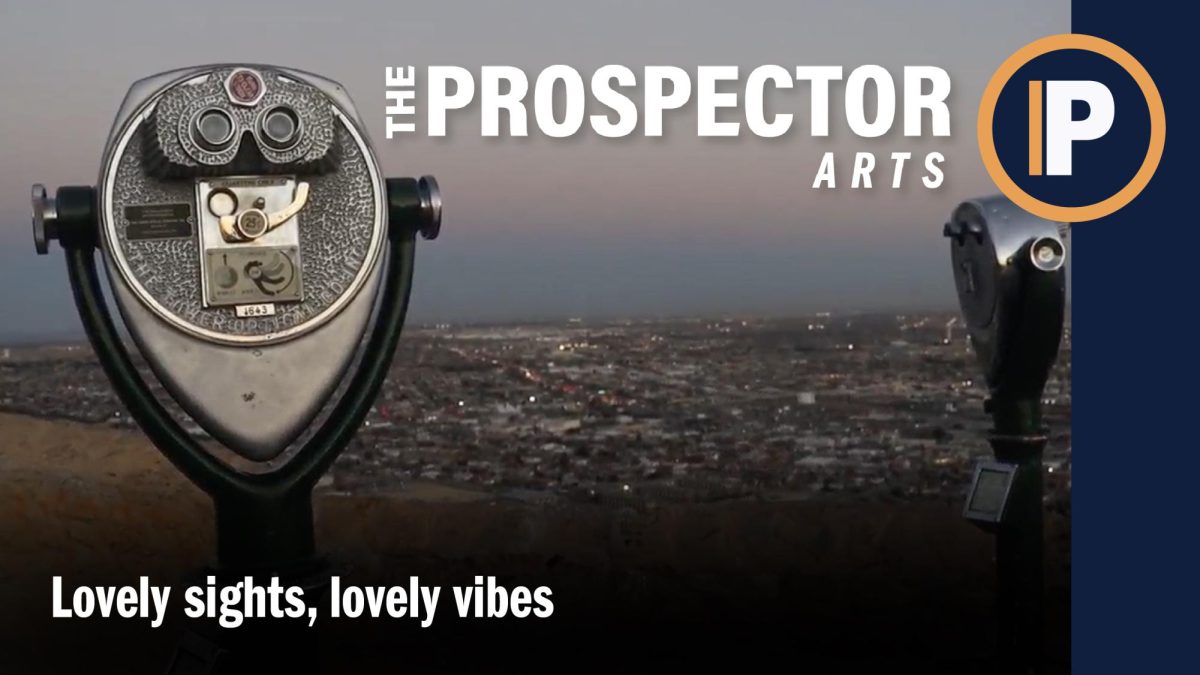Editors note: This is the first of a three part series on professors who skateboard at UTEP
In the early 90s, street skateboarding became a cultural phenomenon for teenagers at the time. One of those teenagers is now Associate Professor of Music Theory, Brian Jarvis, Ph.D. At the age of 14, he received his first ever skateboard for Christmas. He quickly fell in love with the hobby and would check out books from the library to try and learn how to do tricks.
“It is not a normal way to learn much about skateboarding but I got a book or two about skateboarding so I learned certain aspects about that and how to construct ramps,” Jarvis said. “Most of it is just trial and error and watching videos of people (doing) things and seeing things in magazines.”
As Jarvis grew up he fell in love with classical music after watching a movie called “The Man Who Wasn’t There” and fell in love with the score which included music from Beethoven. Although classical music is not part of skateboarding culture, Jarvis knew this was the path he wanted to take with his career.
Jarvis explains that the experience of learning on your own is something he loves about both music and skateboarding.
“Usually, skateboarding is just you and your friends and there’s no goal exactly. You’re just kind of working on yourself and the other people can’t really help you get better,” Jarvis said. “So, it kind of ties in with music because playing an instrument itself is a lot like that, where it’s just you and the instrument and you just kind of have to work.”
While skateboarding grew in popularity, to the common eye it was still a hobby that was only for delinquents.
“Skateboarders are prone to being labeled by society as rebels, social deviants or rule-breakers,” said Zoë Corwin, Ph.D., research professor at the University of Southern California.
This stigma that revolves around skateboarders has led to unfunded programs and efforts by cities to provide skate parks. According to the Public Skate Park Development organization, when cities do not provide dedicated areas for skateboarders it can create tension between skaters and residents.
“The situation in many cities is reflected in roving groups of skateboarding youth that a general public views as a pack of destructive, insolent teenagers. These communities are creating an ‘outsider’ subculture in their youth,” the Public Skate Park Development Organization website said.
Jarvis was aware of the negative stereotypes that came with being a skateboarder while becoming an academic.
“I never got any sort of ‘well you’re a skateboarder so you must be x, y, or z.’ Even though that was the stereotypes around it, (it) never really caused any sort of problems,” Jarvis said. “I didn’t like the idea of somebody looking at me and saying ‘oh you are a skateboarder,’ I just wanted to be me.”
Skateboarding has evolved from its early roots, now it is seen as a professional sport around the world and is hosted at the Summer Olympics. The two worlds of skateboarding and music have begun to collide more than Jarvis ever expected.
“There is such little overlap its interesting. Joaquin and Quinten Blanchard are two students at UTEP that are skateboarders and I don’t think I ever knew any skateboarder-music students that were in my classes,” Jarvis said. “I’ve been teaching for years so it’s pretty novel to have skateboarders start to be part of the music world. They were so separate to me, so when they come together it’s great.”
Read more about from this three-part series on professors who skateboard at UTEP.
Part II: Steven Brown
Part III: William “Bill” Robertson Ph.D.
Alberto Silva Fernandez is a staff photographer and may be reached at [email protected]; @albert.sf08 on Instagram; @albertosilva_f on twitter.


